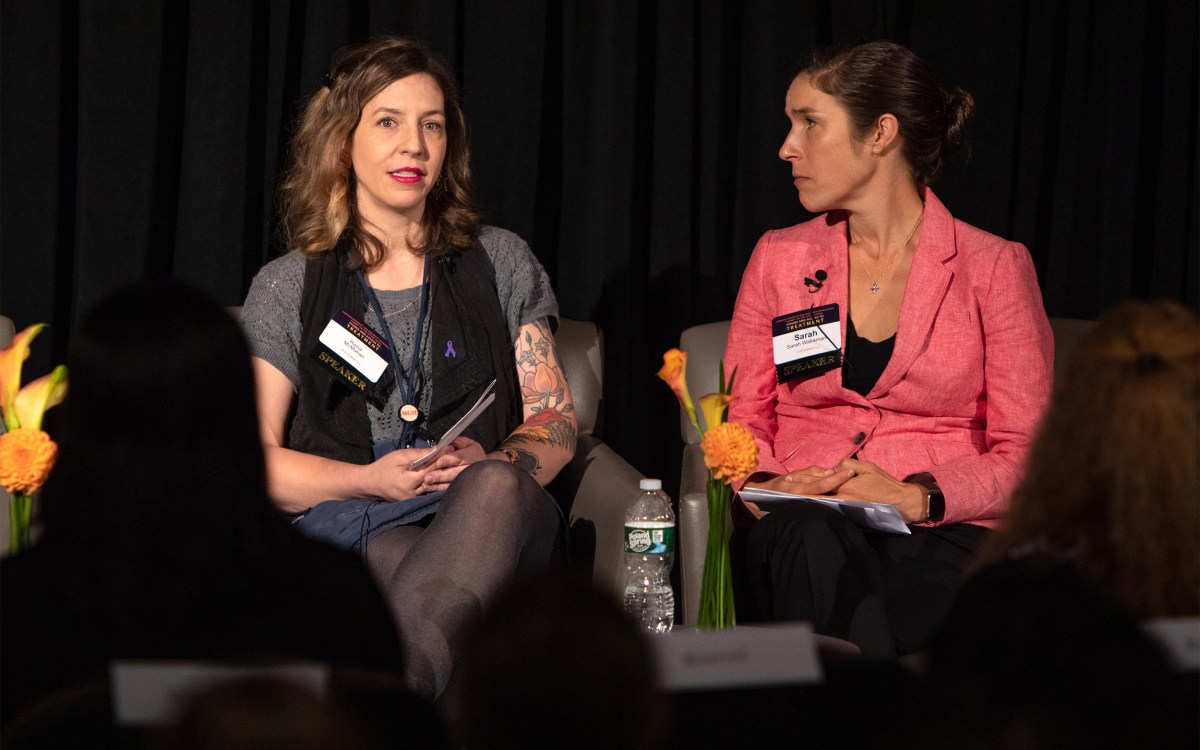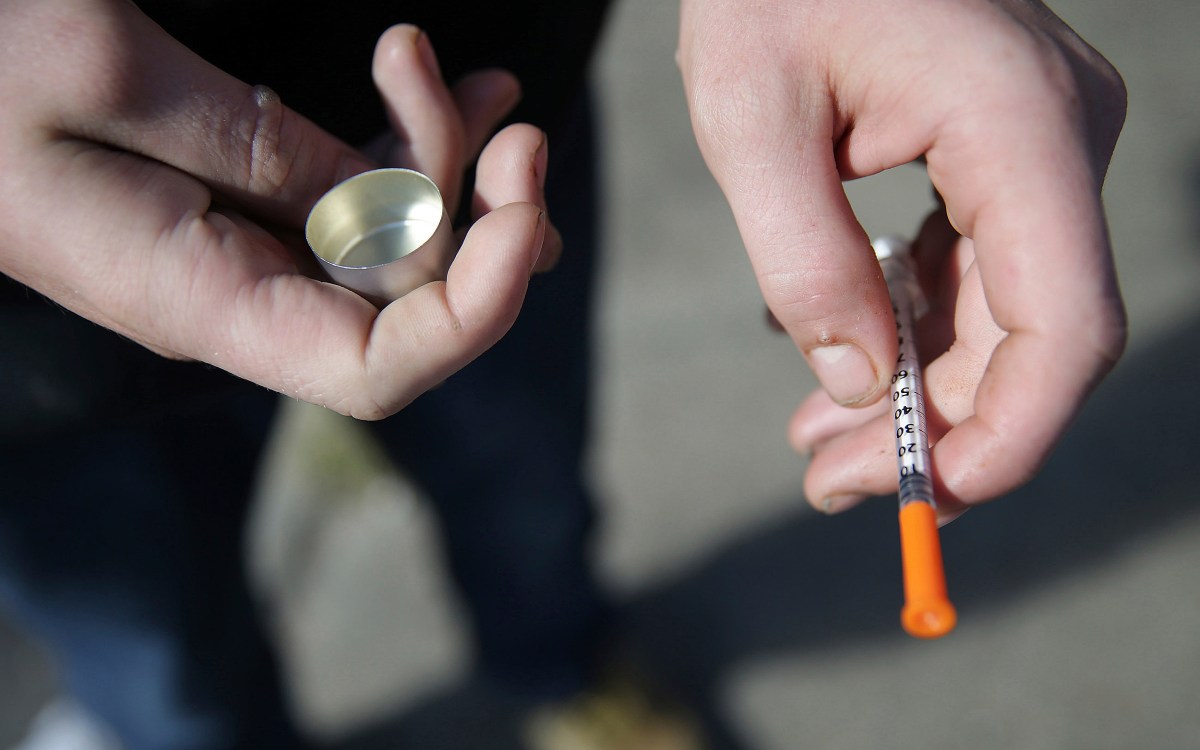
Stephen Foster/Unsplash
Brokering an opioid settlement
Radcliffe fellow discusses prospects for a sweeping agreement in lawsuits
Drug companies and distributors are facing thousands of lawsuits filed by U.S. cities, towns, and tribal governments whose communities have been ravaged by the opioid epidemic, which has claimed hundreds of thousands of lives from overdoses. Resolving all those legal actions separately is impractical, many legal experts say. Instead, lawyers for the states and attorneys general are exploring a solution that would resolve all the cases in a so-called “global deal.” Currently two drug companies and three distributors have proposed a settlement framework for such a deal worth approximately $48 billion that would include cash and medication to treat addiction. But many local governments are wary of such an arrangement, skeptical about how the money would be divided. The Gazette spoke with Alexandra Lahav, 2019-20 Matina S. Horner Distinguished Visiting Professor at Harvard’s Radcliffe Institute for Advanced Study, and professor at the University of Connecticut who studies tort law, about how global settlements operate.
Q&A
Alexandra Lahav
GAZETTE: What is a global settlement? Do all parties involved have to sign on or agree to it?
LAHAV: A global settlement is an agreement that includes everyone involved in a large-scale litigation. An example is the class action. In a class action, all the people who meet a certain description — for example, cellphone customers during a certain period — are included in the class. They are represented by a named plaintiff, and if that lawsuit reaches a settlement they would all be bound by it and not be able to sue on their own. But there are other ways to reach a global settlement as well. For example, a defendant can offer a single amount in settlement on condition that everyone who has a claim against them agrees to be part of that settlement. What makes a settlement global is that everyone or nearly everyone agrees to sign on.
GAZETTE: Can you talk a bit about the discussions around crafting an agreement to settle the thousands of opioids lawsuits?
LAHAV: Right now, several attorneys general have suggested a global settlement in the opioids litigation. In that case, there is a very novel settlement structure on the table. The court has certified a class action, which includes all the cities and towns in the United States. They have the option to opt out of this class. If they don’t, then they are deemed to have agreed to the following structure: When a settlement is reached, the terms will be circulated to the class. If 75 percent approve of the settlement, it will bind everyone, even the 25 percent who did not approve. This is called a “negotiated class action,” and it has never been tried before. It was the idea of a Harvard law professor, William Rubenstein, and a Duke law professor, Francis McGovern.

GAZETTE: What is the challenge with this type of arrangement?
LAHAV: There are a few. First, will everyone agree to join this settlement structure, knowing that they will be bound by a supermajority vote? Second, what about the attorneys general who have brought separate lawsuits, many of whom have opposed this settlement structure? Also what is the relationship between the state attorney general that represents the state as a whole, and all of the state’s subdivisions? For example, let’s say all the cities and towns in Massachusetts are included in a settlement. What then is the role of Attorney General Maura Healey? Is the whole greater than the sum of its parts? I haven’t heard of anybody who knows the answer to this. It’s sort of a local government question in a way. And each state law is going to be different with respect to the power of cities and towns to sue when the state is also suing.
GAZETTE: What’s the advantage of settling the lawsuits in this way?
LAHAV: It’s not realistic that every case is going to go to trial. We are talking about many thousands of cases, and the system just can’t handle it. You can imagine a world where the judge holds a trial every six months, and the defendant settles one for $200 million here and another for $200 million there, and this goes on and on and on. That’s just not good for the communities, and it’s not good for the defendants. The idea behind a global settlement is to come up with something that benefits both and that resolves the dispute.
GAZETTE: How would a global settlement like this compare to the Big Tobacco case in 1998?
LAHAV: There are some similarities, in that both are public health crises that led to massive lawsuits. But there are also a few important differences. First, the tobacco cases were settled exclusively by state attorneys general. Here both attorneys general and individual municipalities are suing, and they have more competing interests. This makes it harder to reach a global agreement. Second, there appears to be less money available here than there was in the tobacco case, which settled for around $200 billion.
GAZETTE: Do you think public anger and the desire for an admission of guilt or an apology factor into whether or not these cases end in a settlement, or are taken to trial?
LAHAV: It seems to me there isn’t an appetite to have all of these companies go bankrupt. For example, some of them distribute a lot of drugs that people depend on. Others have played a relatively small role in the opioid crisis. That said, I do think people want accountability. But you know, one of the things about the American system that’s so interesting is that we do settle a lot of cases, and in most of those settlements, there is no apology, and there is no admission of liability. Instead, we sort of take the amount of money as the apology and the admission of liability, as if the dollars speak for the accountability.
GAZETTE: What can be put in place in these settlements to stop similar crises from happening?
LAHAV: This is a very difficult question to answer. The general theory of deterrence says that if wrongdoers are forced to pay for the harms they cause, then in the future companies considering wrongdoing will not do similar things. We hope that is the case. But it isn’t clear that a litigation can prevent the kind of regulatory failure that we saw in the opioids situation. If there is a settlement it’s likely to provide some relief to states and localities that are suffering, but it is not clear what preventative effect it will have.
GAZETTE: What do you expect to happen next and what are the chances that the global settlement under consideration will be achieved?
LAHAV: Right now there is a settlement proposal on the table proposed by several attorneys general for $48 billion over a period of years. But it is not clear that it will be agreed to by the lawyers for the local governments, who at the moment are opposing it. And some states have also voiced concerns. In order to reach a global settlement, that proposal would need the agreement of the lawyers representing this class of localities. I think we will see a settlement eventually, but when and for how much remains to be seen.
GAZETTE: Are there specific reasons why plaintiffs like or prefer a global settlement, and why defendants prefer it?
LAHAV: Defendants prefer a global settlement because they can wrap up their liability at once. This allows them to announce to the markets the scope of liability. It also gives them the opportunity to move on. Plaintiffs may prefer global settlements because they have greater leverage than they would individually to negotiate a better deal overall, but they may also feel left behind or left out, especially as they lose the power to negotiate individually.
GAZETTE: Do you expect to see criminal trials in these cases? And would they also be solved with a global settlement?
LAHAV: I don’t know if there will be criminal trials, but any criminal action would be completely separate from the global settlement we have been discussing. Any global settlement would only resolve civil claims against these companies.
This interview was edited for clarity and condensed for space.








